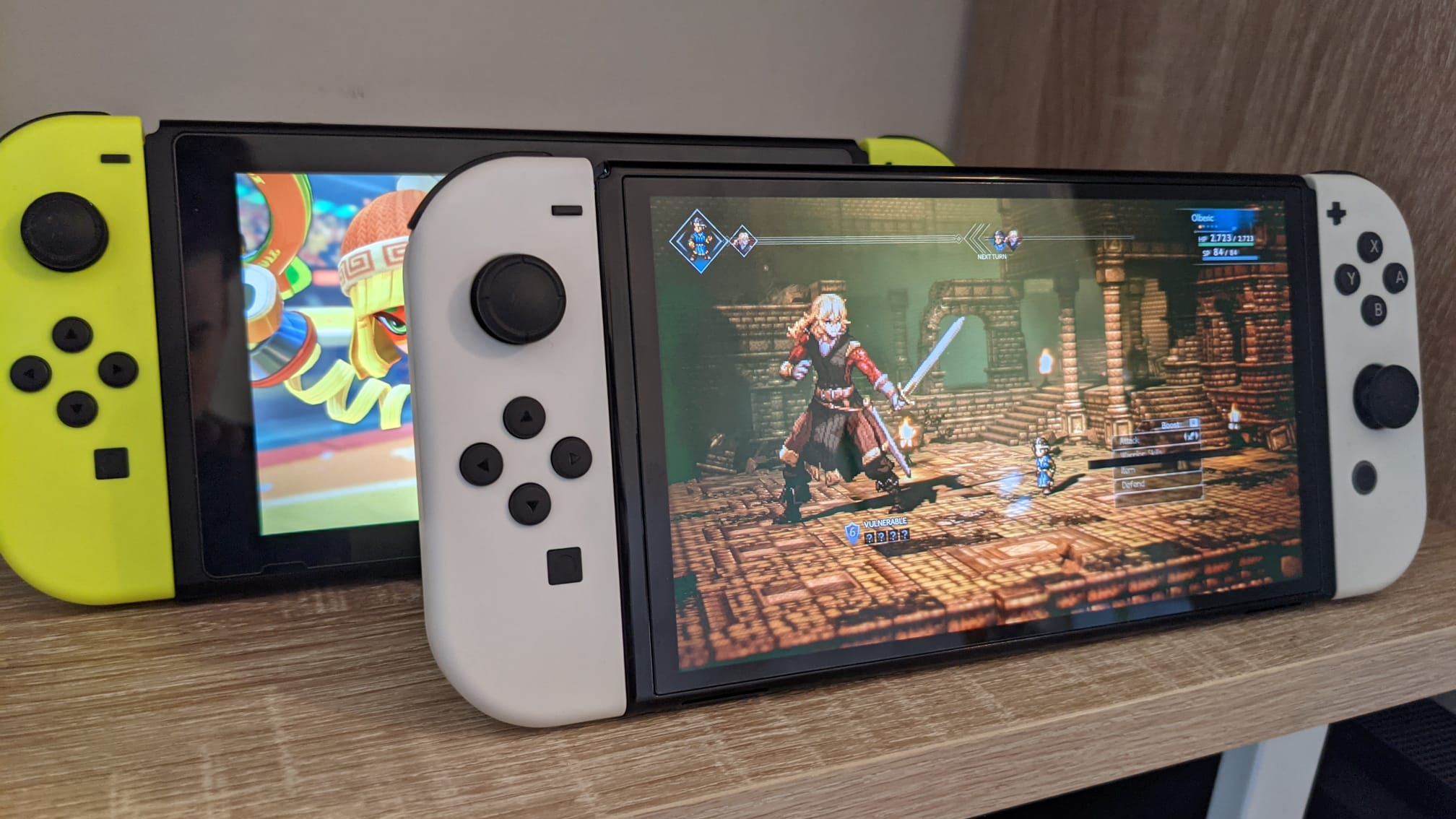Nintendo Switch OLED burn-in isn't a problem, even after 3,600 hours
You don’t need to worry about burn-in on the Switch OLED

The Nintendo Switch OLED appears to be almost immune to burn-in, as a YouTuber’s extreme stress test has proven.
Back in January, we reported that YouTuber Wulff Den had deliberately left his Switch OLED running for over 1800 hours to determine how far the console’s screen can be pushed before exhibiting signs of burn-in.
The stress test involved leaving a static screenshot of The Legend of Zelda: Breath of the Wild on screen, at full brightness, for all hours of the day. After 2,000 hours, there were still no noticeable signs of burn-in, leading Wulff Den to conclude that “OLED burn-in should not be a concern. I don’t think it’s a practical concern for anybody.”
However, it appears that the Switch OLED panel can indeed suffer from burn-in – but it took a staggering 150 days before any image retention was visible.
Wulff’s latest video shows that after 3,600 hours some small “ghosting” has appeared on the panel and these outlines can be visible during gameplay or when viewing particular colors like orange and purple.
Once again, though, Wulff stresses that you really don’t need to worry about burn-in on the Switch OLED.
“This took me 3,600 hours to get to this point, and it’s been on this screen the whole time at full blast,” says Wulff. “That will take somebody years to do in one particular game, and again, that game needs a UI element that doesn’t move on the screen. That particular element needs to be on the screen for at least 3,600 hours to see even a little modicum of ghosting.”
Get daily insight, inspiration and deals in your inbox
Sign up for breaking news, reviews, opinion, top tech deals, and more.
Wulff’s not finished with his Switch OLED burn-in test, however. The YouTuber plans to keep the Switch running to see whether burn-in will become so prevalent that the system will be “unplayable”. Judging by these latest results, we could be waiting for quite some time before it gets to that point – if at all.
Interestingly, despite having the Switch running at full blast since launch, the console’s battery hasn’t deteriorated. A Twitch viewer asked Wulff to test the battery seeing that the console has been on charge for six months, and Wulff said the console died after about eight hours on full brightness. Not bad.
Analysis: burn-in is becoming less of a concern

One of the few concerning elements of owning an OLED TV is the risk of burn-in, which can occur when a static image is displayed for a prolonged period of time. This can lead to image retention or ghosting, which is where you can see the same static image when viewing different content.
When playing video games, burn-in becomes more of a concern due to the fact static images often appear on screen for a long period of time, like HUDs and UI information. If you play one game over and over again for countless hours at a time, then, there’s a chance that these particular elements could become visible when viewing other content.
Thankfully, most OLED TVs are now equipped to combat burn-in incredibly well. Technologies in LG OLED TVs, like pixel shifting and luminance brightness, help mitigate the risk of burn-in extremely effectively, and you can also run a pixel refresher if you ever spot any image retention issues.
It’s comforting to know that the Nintendo Switch OLED is practically immune to burn-in, then, particularly for those who play exclusively in handheld mode. OLED technology has improved dramatically in recent years, to the point where burn-in should only worry those who leave their TV running 24 hours a day and display the same content regularly that includes a lot of static content.
For everyone else, as long as you take the necessary precautions – like turning off your TV when you’re finished and watching a variety of different content – there’s very little to worry about.
- Nintendo Switch OLED vs Nintendo Switch: which is right for you?
Adam was formerly TRG's Hardware Editor. A law graduate with an exceptional track record in content creation and online engagement, Adam has penned scintillating copy for various technology sites and also established his very own award-nominated video games website. He’s previously worked at Nintendo of Europe as a Content Marketing Editor and once played Halo 5: Guardians for over 51 hours for charity. He is now an editor at The Shortcut.
